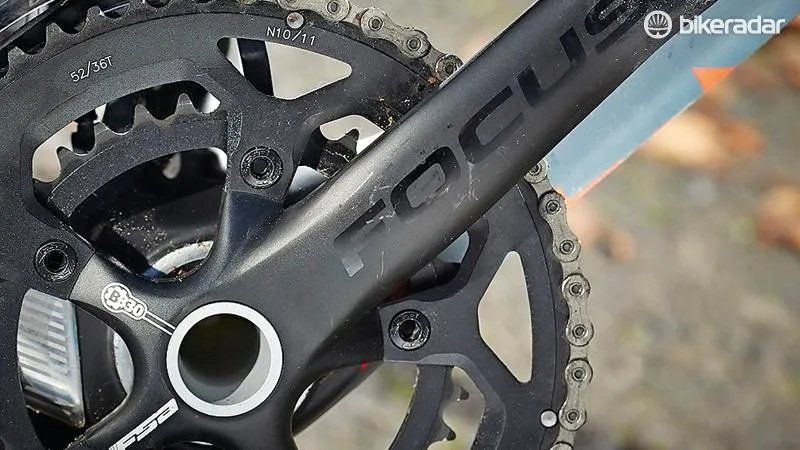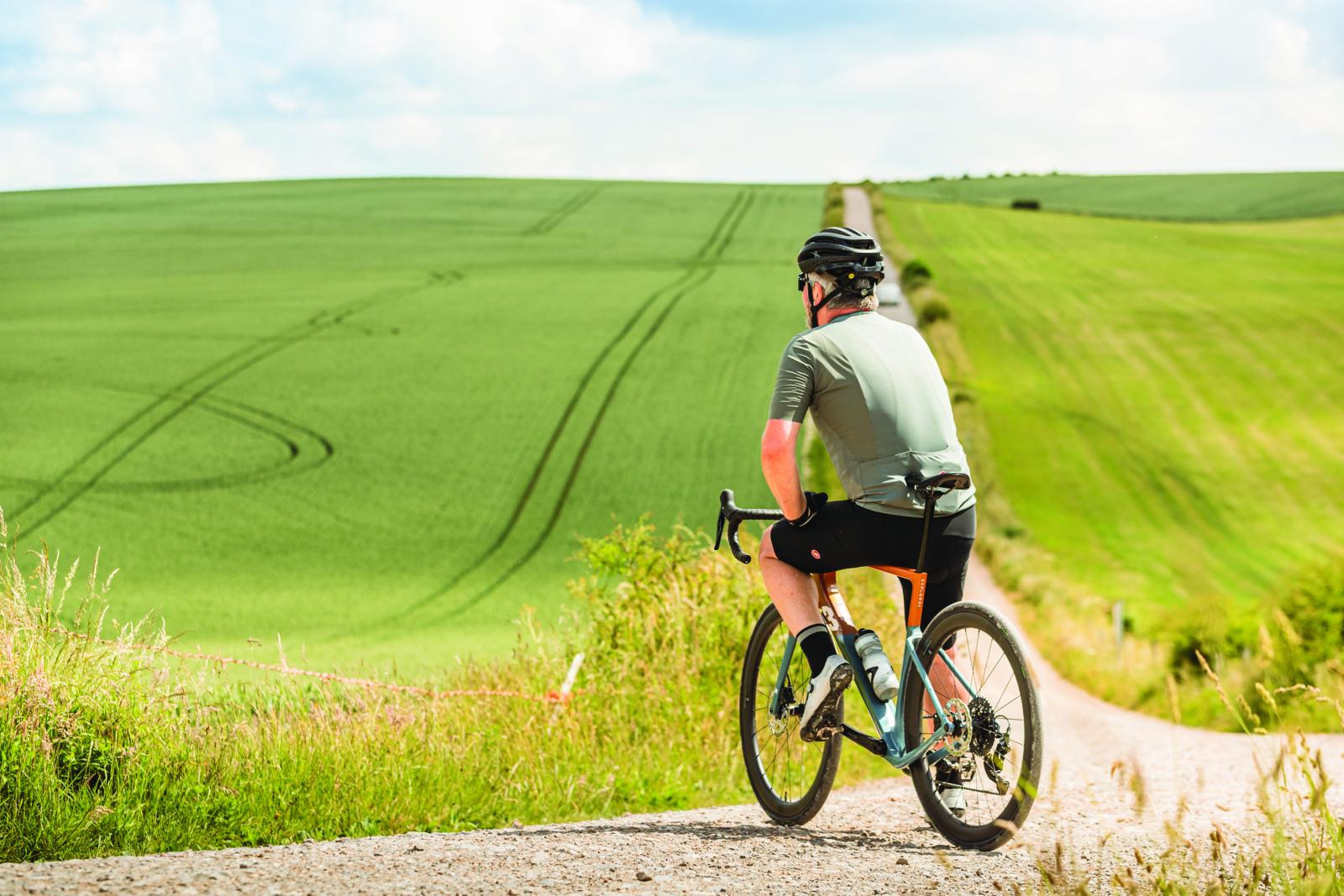Over the last two seasons, Focus has revamped two thirds of its road line-up, with the super light Izalco Max handling pro-race duties and the new disc Cayo taking on the everyman role. That leaves the Ergoride as the longest standing bike in the range and one that’s solely sportive based.
- Highs: Great value, silky endurance-biased ride position
- Lows: Poor saddle
- Buy if: What you want from your next bike is comfort, with a healthy dose of value
The 1.0 is now the range topping bike, and on paper – with a mainly Ultegra drivetrain – it's impressive value for the money, and cheaper than last years equivalent. Connecting you to the ground, the latest Fulcrum rim shape (LG) is wider than before, shaping the larger 25c Durano rubber brilliantly, adding grip and smoothing the ride. The CEX 6.5 is a Focus only model (it's only available as original equipment) and it combines the Fulcrum 5 LG rim with a more modest (Racing 7 grade) hub, hence the 6.5. It makes for a decent wheel – stiff, with a responsive freehub with very little pickup lag – and a very solid basis to the bike overall.
The Ergoride’s geometry is unashamedly biased towards comfort, with the tall 200mm head tube flowing into a hugely sloping 565mm top tube on our large test bike. The longer wheelbase features longer chainstays, a steep effective seat angle (73.5 degrees) and a fairly normal head angle (72.5 degrees), creating a much-shortened position compared with a race bike.

A hugely sloping top tube and plenty of exposed seatpost create a comfortable rear end
On the bike that makes the Ergo a very comfortable place to be: the tall-in-the-saddle ride, aided by the super-sloping frame that exposes plenty of compliant seatpost, makes for a glide-like ride. To counter the shortened position Focus has used a compact drop bar with a slight outward flare to the drops. The wider spread encourages you to get into the drops when you want to press on with the pace, and we appreciated being able to make ourselves smaller when battling into a headwind or trying to eke out every ounce of speed when descending.
For a bike that has such a reduced ride position we were impressed with just how well the Ergo handles. Up on the hoods it's all calm and smooth, but get your hands into the hooks and it still feels suitably nimble thanks to a fine stiff fork and head tube.
When the road starts to rise we found ourselves frequently adopting an on-the-tops, praying mantis style. The Ergo just seems to work better when you keep things steady when ascending – it's not that it doesn’t respond to an out of the saddle attacking style (this frame is plenty taut enough for that), but the short-front end doesn’t feel quite as stable as a long race machine when pushing hard uphill.
For an out-and-out sportive machine we were nicely surprised to see a 52/36 chainring combo; with a bottom of 36-28 its got the right climbing numbers for any ascent. The extra two teeth at the top end are most welcome when really pushing the pace and, with the Ergoride also being such a capable descender, we loved being able to exploit its speed potential.
The only downside we found spec-wise was the in-house branded Concept saddle. We know that saddles are a very personal choice but that’s usually down to shape, not construction. The slim profile felt fine but overly soft padding that shifted around under its cover just didn’t cut it for most of our testers and after a few hours in the saddle the squirmy feel felt plain odd. That with the overriding feel of the hard shell underneath put a slight dampener on what is otherwise a truly fine bike – and a serious bargain.



